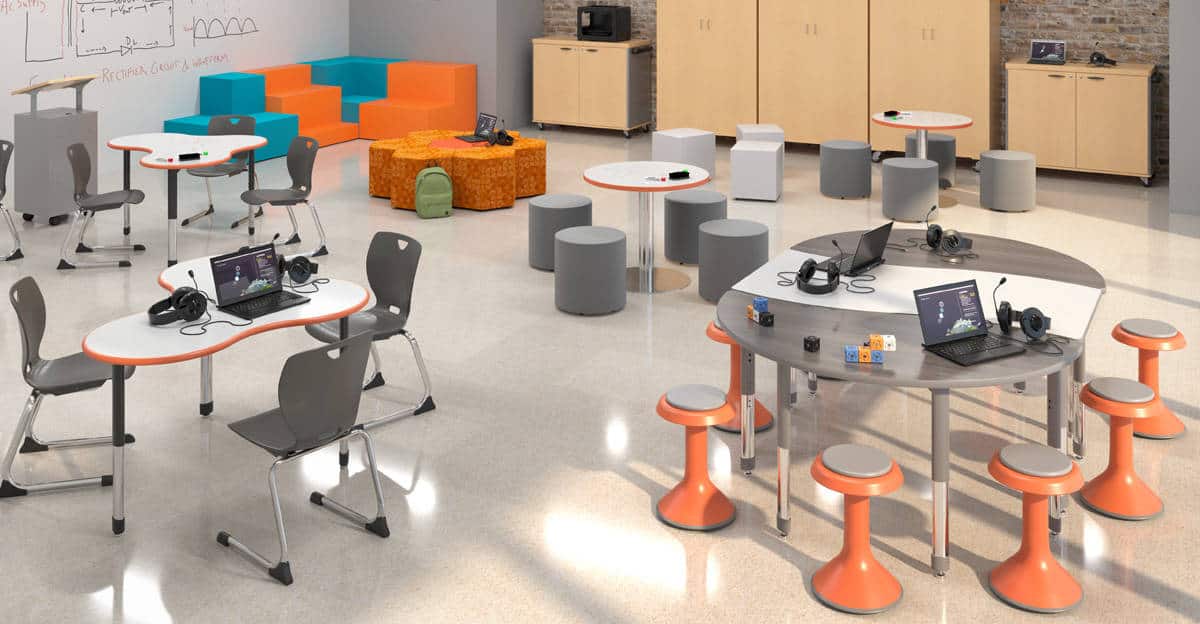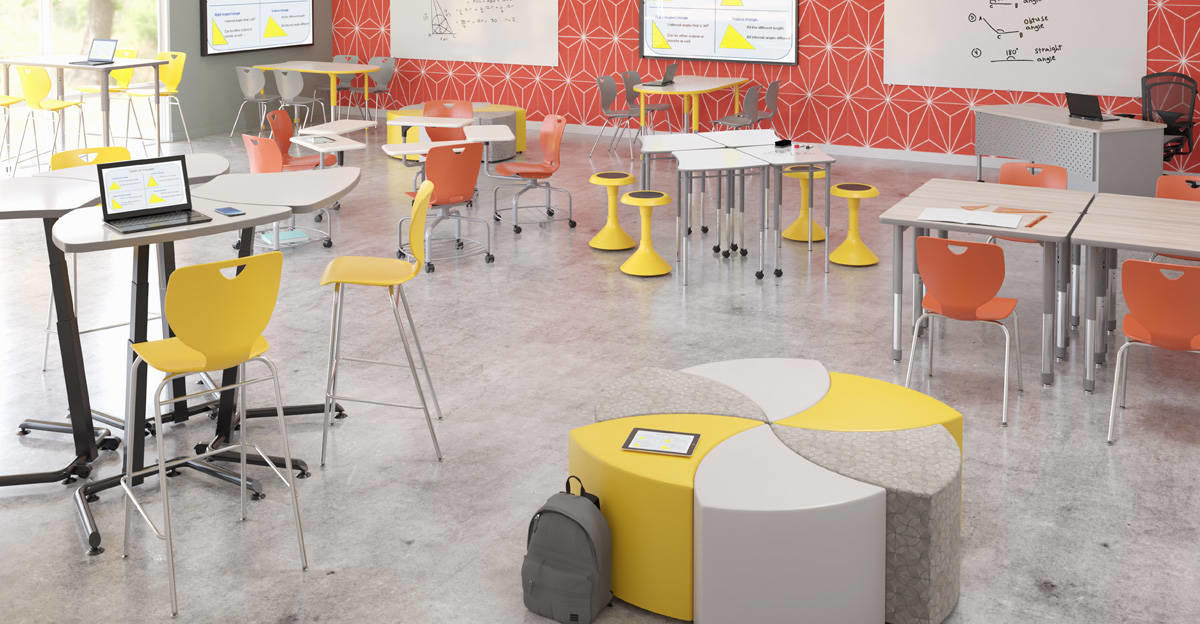In our last blog post, we argued that teaching and learning have evolved dramatically over the last few decades — and learning environments must change if they’re going to support these activities effectively.
There are a number of reasons for this shift, but we highlighted three in particular: Students need increasingly complex skills to succeed in the workplace. At the same time, teachers must meet a diverse range of learning needs — and technology is transforming students’ expectations for how they’ll learn.
Here are some powerful statistics that explain why education is changing — and underscore why modern learning environments must adapt as well.
Students need new skills for success:
- 50%
of today’s jobs will be automated by 2030. - 85%
of the jobs that will exist in 2030 haven’t been invented yet. - 83%
of employers look for problem solving and teamwork skills when hiring.
The research firm McKinsey & Co. predicts that automation will have far-reaching consequences on the global workforce, with about 50% of current work activities becoming automated by 2030. Dell predicts that as many as 85% of the jobs that will exist in 2030 haven’t been created yet.
To succeed in an uncertain future, students must learn to be critical thinkers, collaborative problem solvers, creative risk-takers, and global communicators. In fact, these higher-order skills are already highly regarded by employers: A survey of hiring managers by the National Association of Colleges and Employers found that the ability to solve problems and work collaboratively were the top skills that today’s employers look for in new hires, desired by 83% of employers.

Teachers must meet a wide range of student needs:
- 14% of students have special needs.
- 6.1 million students have ADHD.
- One in 59 children are on the autism spectrum.
During the 2017-18 school year, 14% of U.S. students — or 7 million — had special needs, the Education Department reports, and one in nine children under the age of 18 received special education services. The latest data from the Centers for Disease Control show that 6.1 million students have been diagnosed with attention deficit hyperactivity disorder and one in 59 children has been identified with autism spectrum disorder, a number that continues to rise.
In the most severe cases, these students would learn in a special education classroom — but the majority are integrated into gen-ed classrooms. Instead of a one-size-fits-all approach in which students simply sit and listen to instruction, which isn’t effective for everyone, teachers are employing more active and engaging learning strategies to reach all students.
Students expect to learn differently.
- 49%
of students in grades 6-12 use YouTube for self-directed learning. - 50%
of elementary students say their favorite way to learn is using technology to
collaborate with others. - 75%
of K-12 students say their ideal school would give them a Chromebook or laptop
so they can take charge of their own learning.
According to the annual “Speak
Up” survey of K-12 students from the nonprofit organization Project Tomorrow, half of students in grades 6-12 say they regularly use YouTube for self-directed learning. Half of elementary students say their favorite way to learn is using technology to collaborate with others, and three-fourths all students say their ideal school would give them a digital device to take charge of their own learning.
When students are used to learning, creating, and collaborating outside of school, learning by sitting and listening to a teacher talk just won’t cut it. Students need to take a more active and engaging role in their education — and to do that, they need modern learning environments that are designed specifically to support active learning techniques.
To learn more about how learning environments must change in response to these key trends, download our FREE guide: “6 Essential Elements of a Modern Learning Environment.”
Download the Free Guide





Leave a Reply